Introduction
For about a year now, I have been actively engaged in breeding Sulawesi shrimps and snails. Currently, I have six tanks, two of which are specifically designed for Sulawesi species. I am also in the process of constructing two additional tanks to accommodate the growing population.
Tank setup
The primary objective of my tank set-up is to provide an environment that prioritizes the needs and behaviors of the shrimps, ensuring their satisfaction. In the wild, Sulawesi shrimps are known to be a shy species that love to hide among rocks. Thus, I have designed the tanks with many spaces for the shrimps to hide. As a result, even though there are many of them, they are often not easily visible. However, if one looks carefully between the cracks of the rocks or in hidden places, dozens of them can be found. Generally, the shrimps are more visible at night, although their behavior also depends on the species.
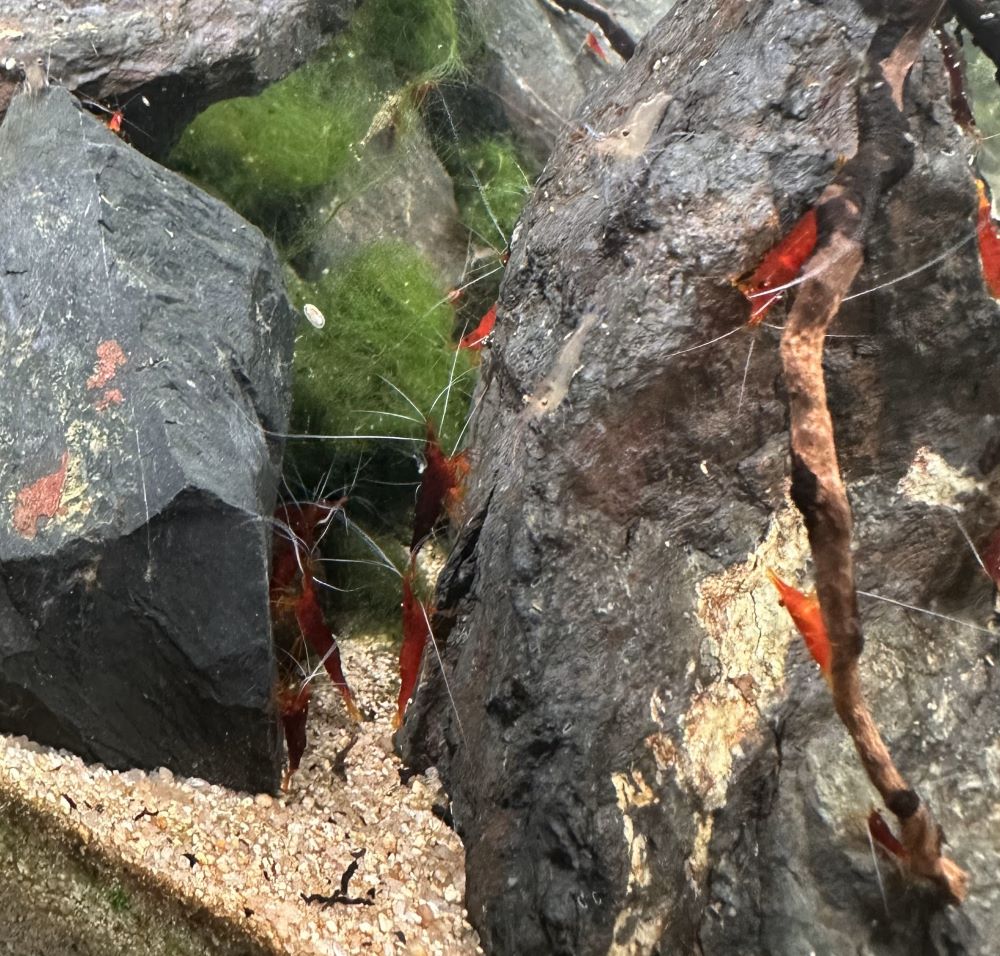
Tank A
- Capacity: 60L
- Substrate: ADA La Plata Sand
- ADA Yamaya Stone (stones that do not alter pH and TDS)
- Branches glued to stones to house the marimo
- Marimo
- Eheim Thermo Control 100W
- 2x iLonda fish feeder
- SOLEd Minilife-Pro V.2
- 2x QANVEE QS-200 Bio Sponge Filter
- Seachem Denitrate + Seachem Matrix
- Seachem Purigen + Seachem ZipBag Sm
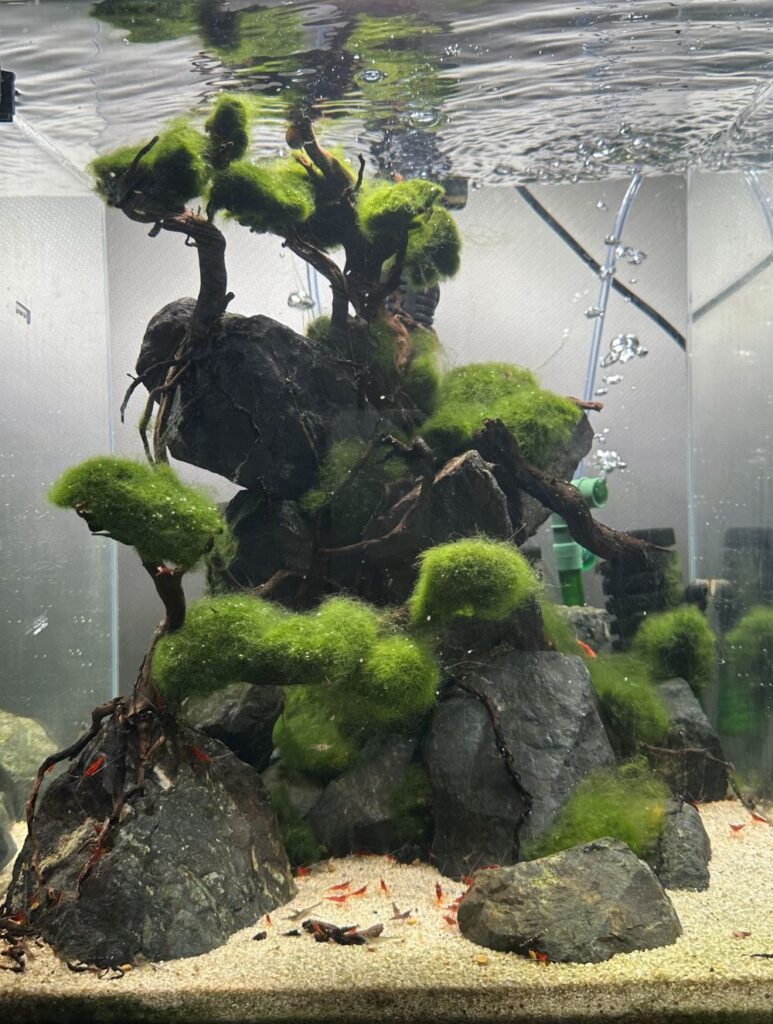
Tank B
- Capacity: 40L
- Substrate: Sakura Shrimp Black Soil (not recommended, it reduces pH)
- Black Lava Rock (neutral and porous)
- Marimo
- Eheim Thermo Control 50W
- 2x iLonda fish feeder
- Chihiros A-Series + Homekit Smart Socket
- 2x QANVEE QS-100 Bio Sponge Filter
- Seachem Denitrate + Seachem Matrix
- Seachem Purigen + Seachem ZipBag Sm
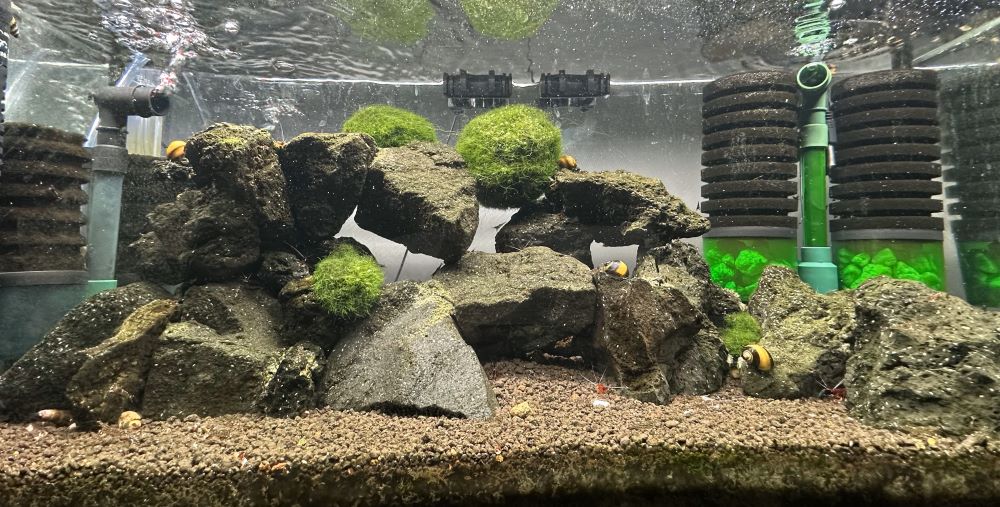
I am considering Alxyon WaterCare C1 (recommended by the manufacturer as suitable for Sulawesi shrimps). I haven't had a chance to try it out yet.
Shared equipment
- Hollyland Arocam C2 HD Livestream (with up to 12x optical zoom and remote control, I can monitor the shrimps even when I'm not at home)
- Chihiros dosing system (used to add and remove water)
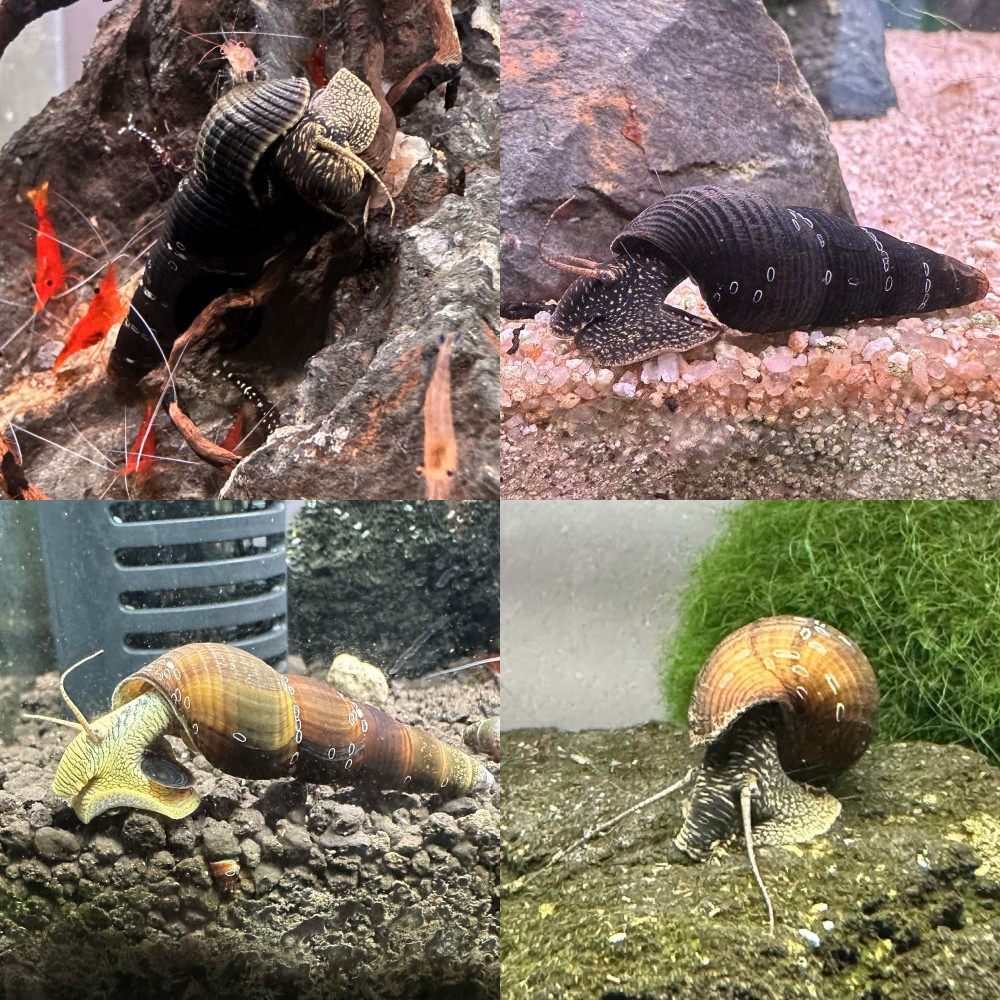
Shrimps and snails
The species I maintain include:
- Harlequin (Caridina spongicola and Caridina woltereckae)
- Yellow Nose (Caridina spinata)
- Yellow Cheek (Caridina spinata)
- Red Line (Caridina striata)
- Red Line (Cardina poso)
- Tigers (Cardina sp. "Tigri")
- Black Galaxy (Caridina sp.)
- Blue Leg Poso (Caridina caerulea)
- Various types of Rabbit Snails (Tylomelania spp.)
The breeding rate of these species depends on the type. As the various colonies become more populated, I always try to balance them or add new tanks.
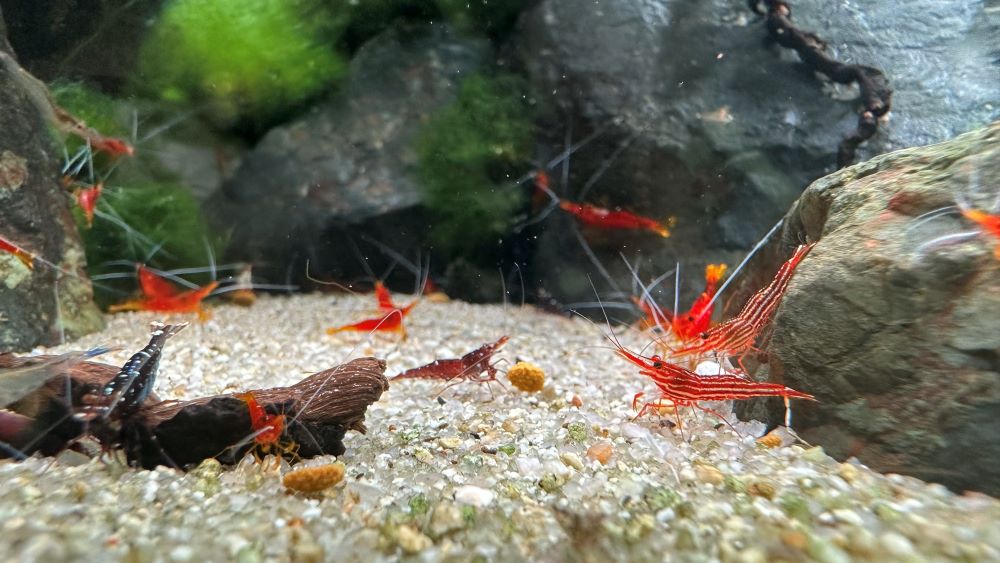
Water parameters
- Temperature: 28°C
- TDS: 120 – 140 ppm
- pH 7.8 to 8.3 depending on the time of day
- KH: 4°-5°
- GH: 5°-7°
- No nitrate, nitrite, phosphate.
One of the tanks has a slightly more acidic environment with a pH that fluctuates between 7.8 and 8.1 (possibly due to the substrate), while the other has a pH that fluctuates between 8.0 and 8.3. I segregate shrimp species based on this difference and their breeding rate.

Minerals used
- Salty Shrimp Sulawesi Mineral 8.5
- Alxyon Towuti (in experimentation phase)
While many amateur Sulawesi shrimp breeders have been successful in replicating pH, KH, and GH values similar to those found in nature, they have had to resort to higher total dissolved solids (TDS) than necessary. However, I aim to achieve TDS values of not more than 150 ppm and an average of 90-120 ppm. At present, I am still in the experimentation phase, with the goal of improving the process and reaching an average TDS of 120-140 ppm.
To achieve this, I dissolve 4g of Salty Shrimp Sulawesi Mineral 8.5 in 25 liters of RO water. CO2 is then added at a rate of 1-2 bubbles per second for three days, after which I remove the CO2 by adding oxygen until the pH is higher than 8.3. This process takes several hours.
To do this you need a product like DYMAX Nano Co2 Diffuser MD-105 and a small water pump. I also use a larger pump to then push the water into an external tank. When finished, I add RO water to the external tank to reduce the TDS to 100-120ppm. The tank is connected to the automatic dosing system.
I am currently experimenting with Alxyon Towuti liquid minerals since the preparation phase can be improved through the use of a remotely controlled and programmable liquid dispenser.
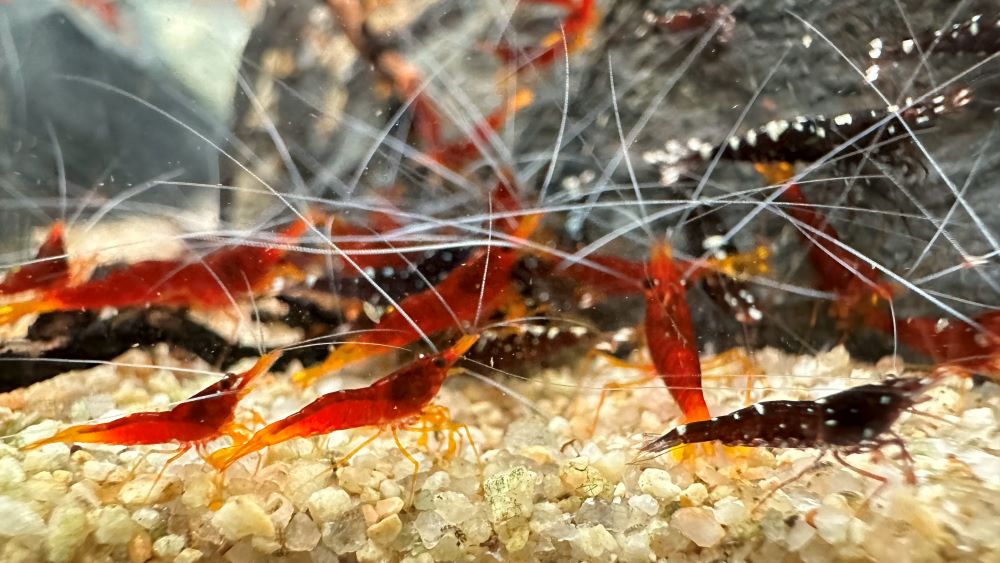
Food
- GlasGarten Shrimp Dinner 2
- GlasGarten Shrimp Baby
- GlasGarten Bacteria AE
- GlasGarten ShrimpFit
Since I use automated food dispensers, I have prepared a mix of powdered ones to dispense together. Of course, I take into account that shrimps also like algae in the dose count.
Not everyone appreciates Shrimp Dinner 2, so occasionally, I vary the food and introduce something new to see if it is appreciated or not. I am trying many and continuously testing, e.g. GlasGarten Crispy Cave, Spirulina, Bio Spinach, GlasGarten Mineral Junkie, Shrimp Lollies Mix, and some foods created by local no-brand manufacturers.
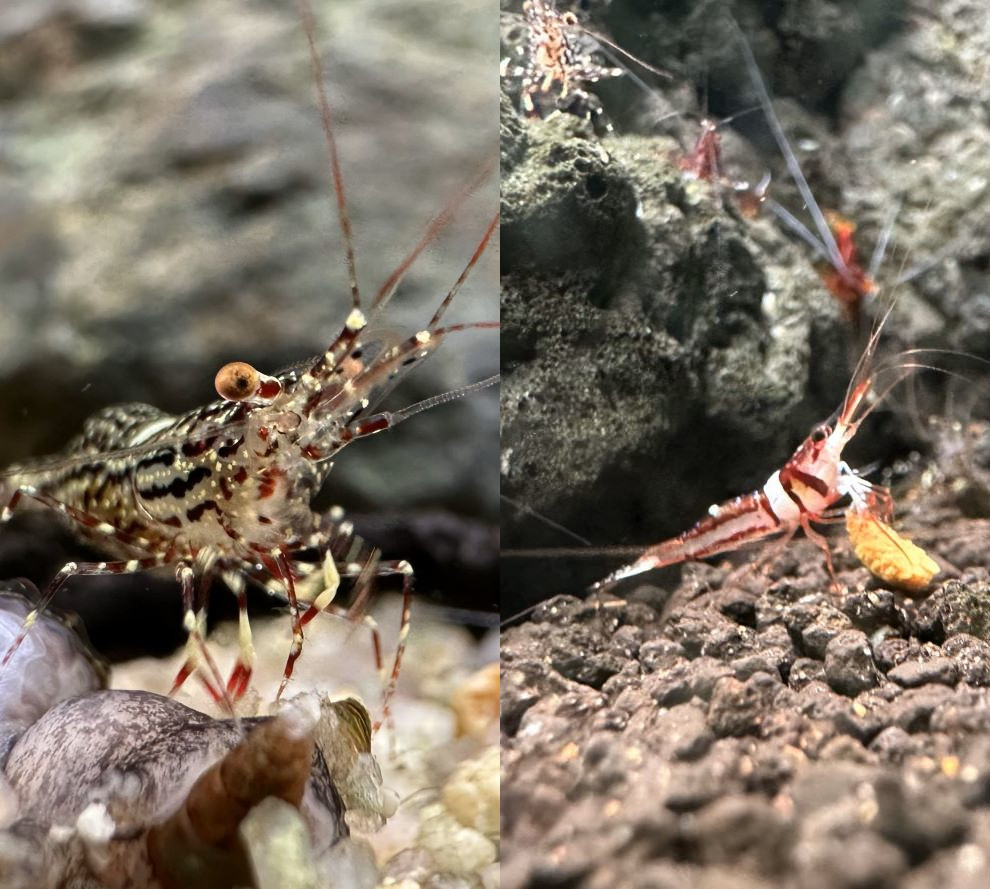
Beneficial bacteria
- Rise Bacteria
- Rise Bacter One
- Rise Bacter+
I have recently started using this brand of beneficial bacteria for shrimps, which was recommended to me by famous breeders of other shrimp species, and they indicated that it could have positive effects even for Sulawesi shrimp. At the moment, I do not have the tools and data to measure the effectiveness or success, so I rely on what is indicated.
Automation and monitoring
Every day, I am close to the tanks and dedicate a lot of time to observing them. However, I want it to be as automated as possible. As it is currently configured, I could be absent for up to 1 month without having to intervene in daily operations.
The water change is automated thanks to the Chihiros Dosing System. I have a tank containing pure RO water, another with re-mineralized water, and a third that is filled with water that is periodically removed from the tank.
Taking into account the evaporated water and the 10% that I want to change every week, I have parameterized the system to have a constant and perpetual water change. Periodically, I recharge the various tanks and remove the water from the dirty water tank. This is something I also do in other non-Sulawesi tanks with plants and other types of shrimps, and it is currently working very well, keeping the parameters always constant.
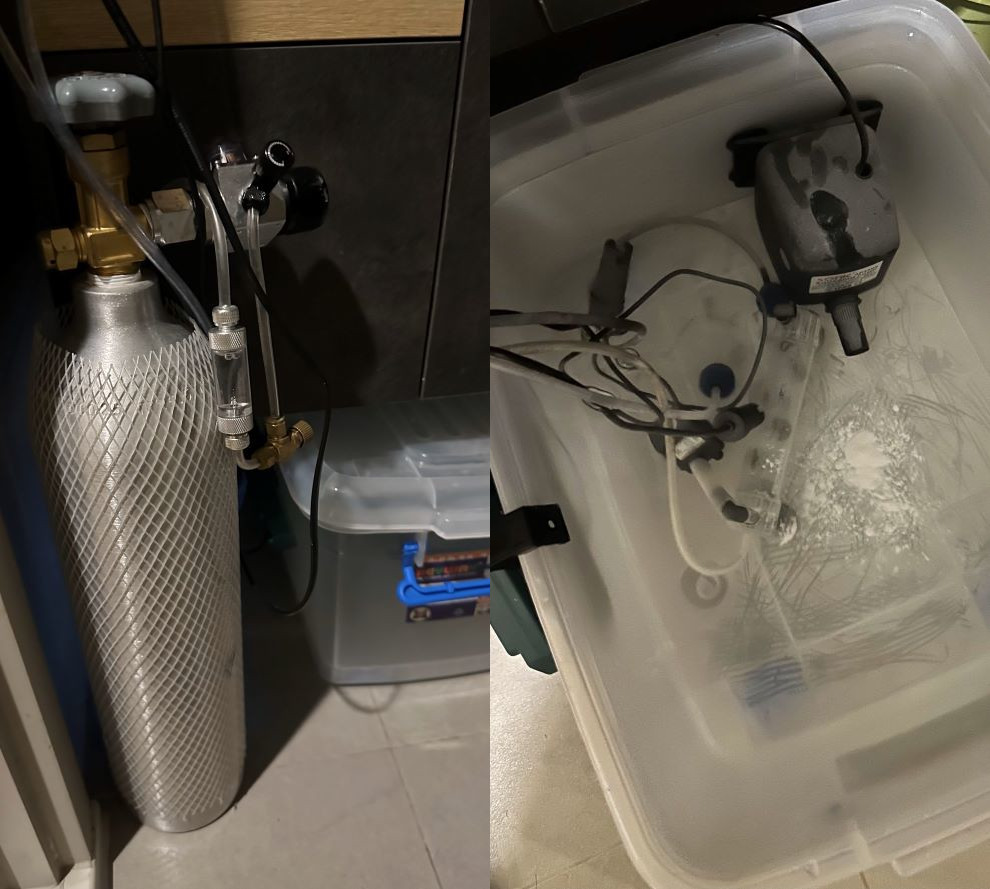
Also, the food distribution is automated:
- GlasGarten Shrimp Dinner 2 is dispensed through the iLonda fish feeder
- GlasGarten Shrimp Baby + GlasGarten Bacteria AE + GlasGarten ShrimpFit are mixed and dispensed through the iLonda fish feeder
- Rise Bacterias (Bacter One KS 50, Bacter + and Bacteria) are dispensed through the Chihiros Dosing System.
It requires a lot of patience in the first phase because the dosages need to be calibrated and monitored every day, but once everything is up and running, it works perfectly. Automation is very dangerous if mismanaged: if something goes wrong, the balance of things can be disrupted.
I found this Hollyland Arocam C2 HD Livestream camera that allows me to monitor everything, and thanks to a 12x optical zoom, I can even remotely see newly born shrimps. In addition, I created a script that runs on a RaspberryPi. It uses the camera to record videos of the various food dosing and sorting phases and sends them to Telegram when I'm not at home. This way I have control over the system's operation.
My level of automation is extreme, but for those who still want to automate, I recommend getting a food dosing system, liquid dosing system, and a remote control camera. This way, coding skills are not required.
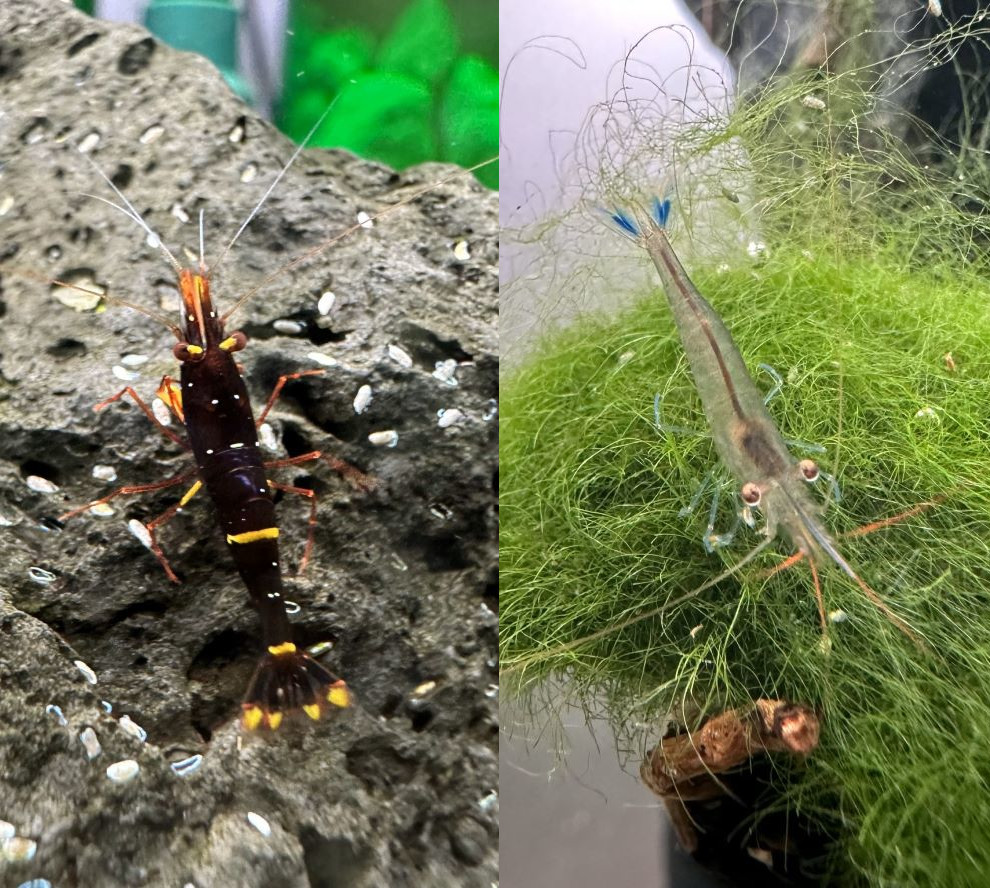
Conclusion
I am not a professional, so I have limited myself to reporting my experience gained in 12 months. However, I dedicate a lot of time to experimenting (not directly in the tanks, I would never put the shrimps' lives at risk for a test), researching, documenting, and sharing experiences with experts. Currently, the various colonies are growing rapidly, and I try to improve every day.
Here are some negative experiences from which I have learned:
- the use of a substrate that negatively affects the pH or a substrate, stones, and rocks that can significantly increase the TDS
- the choice of combining multiple species together (making management more difficult, and one species will probably reproduce faster than the others)
Here are some positive experiences that I would like to share:
- pay attention to water preparation and all values (including TDS)
- balance the food for both adult shrimps and babies
- use biological filters and beneficial bacteria to keep the water cleaner
- always consider the habits and behavior of the shrimps in every choice
Damiano Ferraioli


